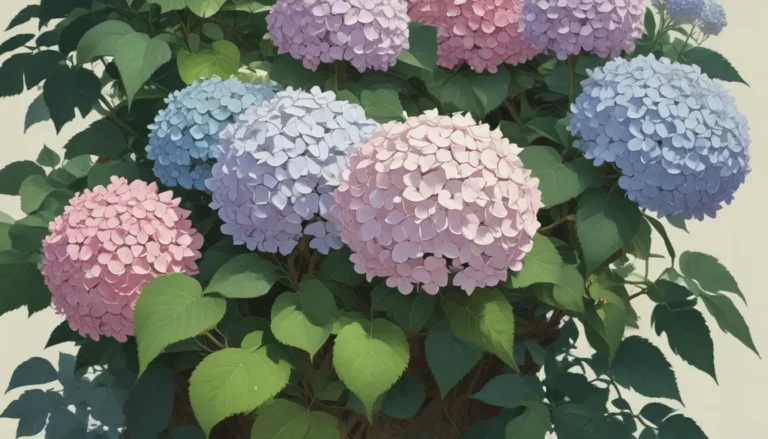Ultimate Guide to Growing and Caring for Swan River Daisies

Brachyscome Iberidifolia
If you have a knack for Australian culture but live in North America, growing Swan River daisies could be a wonderful way to connect with the down under without stepping out of your front door. These bright and cheery flowers boast classic daisy petals, a delightful fragrance, and a spreading habit that can transform dull spots in your garden into vibrant spaces.
In this in-depth guide, we’ll dive into everything you need to know about Swan River daisies, from their origins to propagation, growing tips, and where to buy them. Let’s explore the fascinating world of Brachyscome iberidifolia.
What Are Swan River Daisies?
Originating from Australia, the Swan River daisy (Brachyscome iberidifolia) is a stunning addition to any garden. With lavender, pink, white, and striking blue daisy-petal flowers, this plant is sure to catch your attention, especially when grown en masse as ground cover. Each bloom is approximately an inch wide, featuring petals that are irresistible to pluck one by one while playing the classic “Loves me, loves me not” game.
The foliage of the Swan River daisy is multi-branched with light green, finely divided leaves. While typically classified as an annual, this plant can thrive as a herbaceous perennial in Zones 8b to 11b, especially when potted. Keep in mind that high temperatures may affect flowering, so it’s ideal to provide some shade in hot weather.
Propagation of Swan River Daisies
Propagation of Swan River daisies can be done through seed starting or root cuttings. You can start seeds indoors before the last frost date or sow them directly in the garden. Successive sowings every few weeks can help extend the blooming period.
For root cuttings, take stem cuttings before the plant blooms in spring, dip them in rooting hormone, and plant them in a shallow tray with soilless potting mix. With proper care, the cuttings should develop roots within a few weeks.
Transplanting should be done by carefully placing rooted cuttings or seedlings in well-prepared soil, ensuring adequate spacing for growth.
How to Grow Swan River Daisies
Swan River daisies are low-maintenance plants that thrive in well-drained soil and full sun. If you’re growing them in containers, a standard potting mix will suffice. While they have some tolerance for partial shade, they prefer full sun for optimal growth.
Regular feeding with a high-phosphorus fertilizer can aid blooming, especially for container-grown plants. Water sparingly, ensuring the soil is dry before providing supplemental moisture to prevent overwatering.
Growing Tips
- Plant in a full sun location.
- Be cautious not to overwater.
- Fertilize with a 5-10-5 NPK fertilizer for in-ground plants monthly, or feed container-grown plants weekly.
Pruning and Maintenance
Diligent deadheading can promote continuous blooming of Swan River daisies throughout the growing season. Save seeds from mature flowers to sow the following year. Remove spent annuals or cut back perennial foliage in late fall.
Where to Buy Swan River Daisies
You can find Swan River daisies as starts from local nurseries or seeds from gardening groups. Online options are available for purchasing seeds, offering a range of colors to choose from.
Managing Pests and Disease
Swan River daisies are generally resistant to pests but may attract birds and butterflies. Keep an eye out for snails, slugs, and powdery mildew. Avoid overwatering to prevent root rot, which can be detrimental to the plant’s health.
Best Uses for Swan River Daisies
Whether used as ground cover, border plants, or in containers, Swan River daisies add a vibrant touch to any garden. They are excellent for attracting bees and butterflies, making them a valuable addition to pollinator gardens. Additionally, their flowers are perfect for bouquets, providing a fragrant and colorful accent to indoor spaces.
Quick Reference Growing Guide
- Plant Type: Herbaceous flowering perennial
- Flower/Foliage Color: Black, blue, lavender, magenta, pink, purple, white, or yellow/green
- Native to: Australia
- Water Needs: Low to moderate
- Hardiness (USDA Zones): 8b-11b
- Maintenance: Low
- Bloom Time: Spring, summer, early fall
- Tolerance: Drought, light frost, part shade
- Exposure: Full sun
- Soil Type: Sandy, loamy
- Time to Maturity: 60-120 days
- Soil pH: 5.0-7.5
- Spacing: 5-6 inches
- Soil Drainage: Well-draining
- Planting Depth: 1/4 inch (seeds), crown even with soil surface (rooted cuttings and nursery starts)
- Attracts: Bees, butterflies
- Height: 12-18 inches
- Uses: Beds, borders, containers, cut flowers, ground cover, mass plantings, pollinator gardens
- Spread: 7-11 inches
- Family: Asteraceae
- Growth Rate: Fast
- Genus: Brachyscome
- Common Pests and Disease: Slugs, snails; powdery mildew, root rot
- Species: Angustifolius
The Daisy from Down Under
With its charm and origin from Australia, the Swan River daisy offers a unique connection to the land down under. Growing these flowers can be a delightful way to bring a piece of Australia into your garden, all while enjoying their beauty and fragrance. Have you grown Swan River daisies? Share your experiences in the comments below.
For more blue beauties, check out our article on Jacob’s ladder. And if you’re a fan of daisies, explore our guides on African daisies, painted daisies, and blackfoot daisies for more floral inspiration.
Remember, tending to your garden with care and patience will result in a flourishing display of Swan River daisies, bringing joy to both you and your local pollinators. Happy gardening!





